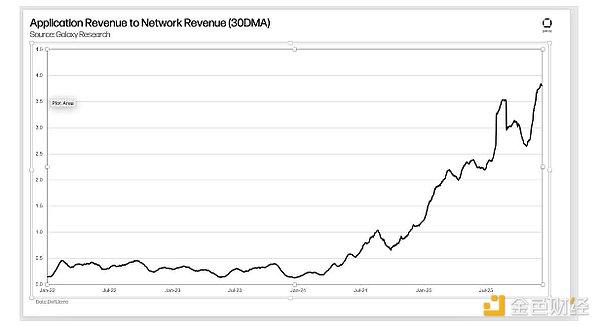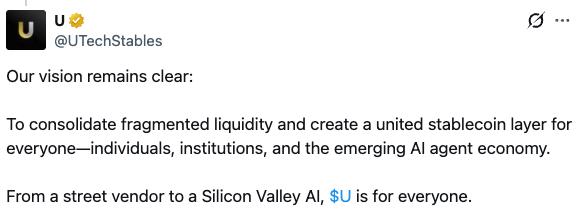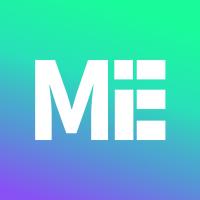III Quality LSDFI Projects
3.1 Ion Protocol
Ion Protocol is a CDP protocol built on Ethernet pledge positions. The protocol wants to be able to accept deposits of different types of Liquidity Secured Tokens (LSTs) and EigenLayer Secured Asset-Backed Positions, and use vaETH to track the proceeds of the allETH after aggregating these assets into allETH. The goal of the protocol is to integrate allETH liquidity pledge derivatives and complete the aggregation of returns.
3.2 unshETH
unshETH is an LSDFi protocol that facilitates the decentralization of ethereum pledge validation through liquidity incentives. unshETH introduces two concepts, validator decentralized mining (vdMining) and validator-dominated options (VDOs).
3.3 vdMining
vdMining can be understood as a kind of liquidity incentive nesting, pure nesting can not be sustainable mining, so vdMining introduced the concept of decentralized incentives. In layman’s terms, vdMining sets an ODR (Optimal Decentralization Ratio) through governance, and if the CR (Current Ratio) is closer to the ODR, the more mining incentives for all users in the pool. This is done to incentivize users to pledge ETH into the more decentralized LSD protocol, thus driving the overall decentralization of the ethereum pledging circuit.
We mentioned the concept of ODR above, and the dominant LSD holders in ODR can write VDOs for the corresponding LSD assets, while the non-dominant LSD holders can purchase them through unshETH DAO. My personal understanding is that the VDOs represent your eligibility to exercise at expiration, with profit and loss depending on the CR, and profit at expiration if the LSD assets are closer to the ODR.
This provides an additional revenue stream for those who are not dominant LSD asset holders. the ultimate goal of VDOs is to better adjust the value of the CR by adding a secondary market. Of course, this is just my personal understanding and is subject to the final product of the agreement.
3.4 Lybra
Lybra is an overcollateralized stablecoin protocol. In addition to regular overcollateralization, liquidation, and arbitrage, unlike MakerDAO and Liquity, Lybra mints the interest-bearing stablecoin eUSD by collateralizing the interest-bearing asset, stETH. Lybra converts the interest stETH generated by stETH into eUSD and distributes it to both the eUSD Holder and the Lybra Token Pledgor.
Essentially, Lybra is capturing the benefits of Ether pledging through the stablecoin eUSD. eUSD has a safe pledge rate of 160% and an APY of 7.2%. Under optimal conditions ($1.6 of stETH minted for $1 of eUSD), eUSD is slightly less profit-efficient than stETH. eUSD is, however, a liquid asset, and holders of eUSD are able to make more profit in the DeFi protocol, thus providing greater capital efficiency for Lybra’s pledgers.
3.5 Raft
Raft is a lending and stablecoin issuance platform for cryptocurrency holders. It provides an efficient way to borrow and lend by allowing users to generate R tokens using liquidity pledge tokens as borrowing capital and maintain a stable peg to the US dollar. The project focuses on providing deeply liquid and stably pegged R tokens to meet the demand for stablecoins in a decentralized ecosystem.
At the same time, it improves capital efficiency and fee flexibility, optimizes liquidation and incentives, and works to provide a better user experience and incentives. Overall, the Raft project covers lending, stablecoin issuance, liquidity provision, and improved mechanisms, aiming to bring more financial opportunities and benefits to cryptocurrency holders.
LSDFi projects that have not yet issued coins
Obol Network
Official Website: https://obol.tech/
Twitter: https://twitter.com/ObolNetwork
More information: https://app.vedao.com/projects/
Project description:Obol Network, a protocol that facilitates trust-minimizing pledges through multi-operator authentication.Obol focuses on extending consensus by providing permissionless access to Distributed Validators (DVs). Distributed validators will and should form a large part of the main network validator configuration. In preparation for the first wave of adoption, Obol Network is currently using a middleware implementation of Distributed Validator Technology (DVT) to enable the operation of a Distributed Validator Cluster that preserves the validator’s current client and remote signing infrastructure.
Obol believes that in the future Distributed Validators will make up a significant portion of the mainnet validator configuration, and is therefore committed to extending consensus by providing permissionless access to Distributed Validators (DVTs), used as a core building block for various Web3 products.
Investment and Financing:
Obol Labs has now raised a cumulative total of $19 million in funding.
In September 2021, Lido provided Obol with a $100,000 LDO grant to continue researching and building the protocol.
In October 2021, Obol closed a $6.15 million funding round with investors including ConsenSys, Acrylic Capital, Coinbase Ventures, IOSG Ventures, Blockdaemon, Delphi Digital, Stakefish, Figment Fund, Chorus One, Staking Facilities and The LAO, among others.
On January 17, 2023, Obol closed a $12.5 million funding round co-led by Pantera Capital and Archetype, with Coinbase Ventures, Nascent, BlockTower, Placeholder, Ethereal Ventures, Spartan and IEX followed, as well as direct participation from top Validators such as Stakely, Cosmostation, Kukis Global, Swiss Staking, Swift Staking, Blockscape, and DSRV.
Ether.Fi
Official Website: https://ether.fi/
Twitter: https://twitter.com/ether_fi
For more information: https://app.vedao.com/projects/
Project description: Ether.Fi is an unmanaged liquidity pledge platform that allows users to maintain control of their keys while delegating Ether validator operations to node operators. Each validator generated through its protocol will be represented as an NFT. ether.fi pledgers who deposit at least 32 ETH will hold the NFT, which represents the validator’s financial interest. This NFT can be split once the Liquidity Pool and Protocol Funds Management smart contracts are implemented.
Investment and Financing:
On February 28, 2023, Ether.Fi closed its first round of funding in the amount of $5.3M from Chapter One, North Island Ventures, Arrington XRP Capital, Maelstrom, Node Capital, Version One, Purpoes Investments.
EigenLayer
Official Website: https://www.eigenlayer.xyz/
Twitter: https://twitter.com/eigenlayer
More information: https://app.vedao.com/projects/
Project description:: EigenLayer is a set of smart contracts on Ether that allow ETH pledgers to choose to validate new software modules built on top of the Ether ecosystem. Pledgers opt-in by granting EigenLayer smart contracts the ability to impose additional reduction conditions on their pledged ETH, allowing for extended crypto-economic security.
EigenLayer introduces the Re-staking model: a protocol that creates an opt-in intermediate layer where a user is allowed to deposit pledged ETH into a smart contract, agreeing to grant EigenLayer additional enforcement rights. I.e., cede the management of the pledged ETH to EigenLayer to gain more revenue.
Such a network can be viewed as an aggregated sub-network of voluntary opt-ins to Re-staking among the many Ether pledgers and Validators that share security with Ether. Opt-in in this network would have many consequences: for example, providing additional Validation services would enable additional Validation revenue to be captured. The roles of a Token are multiple, and can be both a Pledge Token and a Verification Token.
Investment and financing:
To date, EigenLayer has completed two rounds of financing:
In August 2022, EigenLayer closed a $1.45 million seed round of funding from Polychain*, Ethereal Ventures*, Figment Capital, dao5, Robot Ventures, P2P Validator, Anthony Sassano , Viktor Bunin, Mara Schmiedt, Tim Beiko, Marc Bhargava, Zaki Manian, Joe Lallouz, Jon Charbonneau.
On March 28, 2023, EigenLayer closed another $50 million Series A funding round at a $500 million valuation from Blockchain Capital*, Coinbase Ventures, Hack VC, Electric Capital, Polychain, Bixin Ventures, IOSG Ventures, Finality Capital Partners.
Tenderize
Official Website: https://www.tenderize.me/
Twitter: https://twitter.com/tenderize_me
More info: https://app.vedao.com/projects/
Project description: Tenderize is a pledge derivative protocol that allows users to collateralize loans and trade tokens while maintaining a position in the pledged asset. With this added flexibility, the company believes it can unlock the full utility potential of pledged assets, with the ultimate goal of enabling license-free liquid pledges. Currently deployed on ETH/ Arbitrum, the liquid pledge protocol supports liquid pledges of four assets, $MATIC/ $GRT/ $AUDIO/ $LPT. To date, Tenderize has deposited up to $1.68 million in TVL, which has yielded up to 24% annualized.
Investment and Financing:
On July 7, 2022, Tenderize closed a $3 million seed round of funding from Eden Block*, TRGC, Figment Capital, Encode Club, Daedalus, Syndicate.
Reference list of other LSD projects: https://docs.google.com/spreadsheets/d/1JVCzecdr4xShnl7qUrKOulxLnLq8mDAy5pGV6TtizVQ/edit#gid=0
IV Trends of LSDFi
4.1 Outlook
In the future, how LSDFi can truly utilize the pledge mechanism to empower the long-term health of the public chain ecosystem while ensuring no systemic risk, as well as the evolution of its competitive landscape, are all issues worthy of in-depth exploration.
In order to realize the long-term healthy development of LSDFi, it is necessary to design a more simplified pledge process to lower the threshold of user participation and improve the user experience. A simplified pledging process will attract more participants to the LSDFi market, facilitating the provision of liquidity and increased funding.
It is also crucial to introduce safety and security measures, such as verifier margins, liquidity limits and self-guarantees, which can effectively prevent malicious behavior and systemic risk. These safety and security mechanisms will provide confidence to users and enhance the stability and reliability of the market.
In addition, strengthening governance and consensus mechanisms is key to realizing the long-term healthy development of LSDFi. Through community governance and consensus mechanisms, it is possible to ensure that the rights and interests of pledgers and verifiers are protected and potential disputes are reduced. The healthy development of the public chain ecosystem requires the balance and coordination of the interests of all parties, and a good governance and consensus mechanism will provide a stable operating environment for the LSDFi market.
4.2 Risks
It is worth noting that LSDFi is a relatively young market, and as with all emerging technologies, one should be aware of the risks involved in interacting with such a project, including general risks involving liquidity pledges.
Curtailment Risk: LSD holders may be exposed to these curtailment risks if validators fail to meet certain pledge parameters (e.g., offline), for which they may face penalties.
LSD Price Risk: The price of the Liquidity Pledge Token may fluctuate due to market forces and may differ from the underlying token. This may expose users to price volatility and potential liquidation risk if used as collateral.
Smart Contract Risk: Each smart contract a user interacts with introduces a new level of smart contract vulnerability.
Third-party risk: Some programs may use other dApps as part of their normal operations (e.g., revenue strategies). In this case, users are exposed to additional counterparty risk.
In addition, the above factors do not include project-specific risks that vary from project to project. Users should conduct thorough due diligence before participating.
4.3 Opportunities
Based on the above understanding, future competition in LSDFi may focus on two key opportunities: secure aggregated mining and the development of ‘LSDFi+’. By combining these two aspects, a more secure, efficient and value-added LSDFi ecosystem is created.
Multi-chainization of LSD business is an inevitable trend, only from the perspective of pledge, as long as the POS mechanism, theoretically, LSD can be created, but from the cases of the above projects, the vast majority of LSD projects should start from a certain chain or a certain ecosystem before starting to do other public chains.
In conclusion, LSDFi, as an important part of the public chain ecosystem, its future development needs to be empowered by simplifying the pledge process, introducing safety and security mechanisms, and strengthening governance and consensus for long-term health.
Meanwhile, market decentralization, the rise of innovative solutions and cross-chain cooperation will characterize the competitive landscape of LSDFi. These trends will drive the prosperity of the LSDFi market and provide users with more choices and better experiences.
V. Summary
In 2023, LSDFi gained phenomenal growth, involving a 58.7-fold increase in Total Value Locked (TVL). This shows the interest and demand from investors for higher yield opportunities through pledged ETH.
A number of these LSDfi agreements have opened up new opportunities for LSD holders looking for income.
By providing additional use cases for liquidity pledge tokens, LSDfi incentivizes pledge participation and has the potential to accelerate the growth of liquidity pledges. Considering that the industry is in its early stages of development, it will be interesting to further observe the innovations in this space and the adoption of LSDfi.
In the meantime, the LSDFi market covers a wide range of sectors and programs, offering a rich and diverse range of solutions and capabilities. Market share, TVL, and pledge ratios are important indicators to assess competitiveness. Over time and as the market evolves, the LSDFi market will continue to change, bringing new competitive landscapes and opportunities.
In the process of organizing the data, many LSD projects have a very poor UI experience. In addition, many projects have a lot of Use Cases in the LSD, but do not tell the user how to use them, and the overall UX experience is very poor.
CEX is a factor that can’t be ignored, as the biggest traffic entrance of Web3 is also the gathering place of various Token, take Coinbase for example, only CBETH-ETH brings the transaction volume up to over $10M, besides liquidity, it will also influence speculators to pay more attention to the LSD track.
To summarize, LSD has become the core narrative of the crypto market. there is still a lot of room for growth in the LSD market size. While there are concerns about a sell-off in ETH unlocked after the Ether Shanghai upgrade, the LSD track as a whole is still expected to perform better in terms of numbers.
If you want to lay out on the LSDFi track, it is recommended that you prioritize and select the high-quality LSD alpha mentioned above that has not yet been coined.





